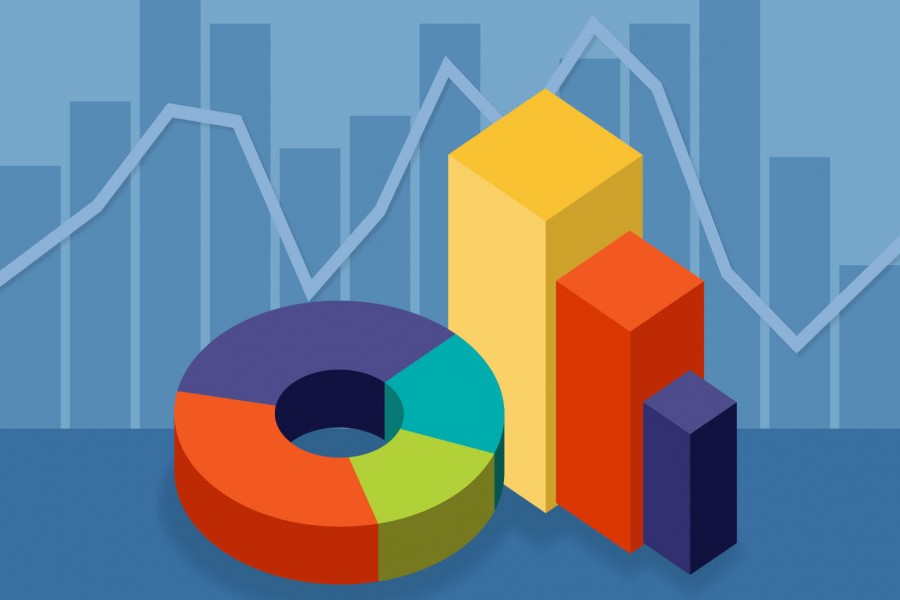Bangladesh’s economy is set to grow steadily over the medium term, with key sectors – agriculture, industry, and services – showing signs of gradual recovery, according to a new projection by the Finance Ministry.
The Medium-Term Macroeconomic Policy Statement, released recently, estimates that the country’s real GDP growth will increase from 4.22 per cent in FY24 to 5.0 per cent in FY25, eventually reaching 6.5 per cent by FY28.
This growth outlook is underpinned by steady sectoral performance, improved macroeconomic stability, and the gradual recovery of demand-side components such as consumption, investment, exports, and imports.
The real sector of the economy, viewed through the supply-side lens, is composed of three major pillars – agriculture, industry, and services. Each plays a critical role in supporting economic expansion, job creation, and overall development.
The agriculture sector, although contributing only around 10 per cent to GDP, plays a crucial role in food security and rural stability.
Its growth is projected to rise from 3.11 per cent in FY25 to 3.57 per cent by FY28, as per a UNB agency report.
Agricultural output will continue to provide a vital cushion against external shocks, while ensuring rural stability and livelihoods, according to the statement.
The industry sector, which accounts for about 37 per cent of GDP, slowed to 3.51 per cent in FY24 due to global and domestic challenges. However, growth is expected to bounce back to 7.36 per cent by FY28.
This recovery is expected to be driven by improved domestic demand, increased investment, and a gradual rebound in export-oriented manufacturing – particularly in the garments and textiles sector.
The services sector, the largest contributor with roughly 52 per cent of GDP, is expected to continue as the main growth driver.
Activities in trade, transport, communication, and finance are projected to contribute up to 3.4 percentage points to annual GDP growth.
On the demand side, the recovery of consumption and investment – the two largest components of GDP – will play a pivotal role in supporting economic momentum.
Private consumption, which accounts for roughly 65 per cent of GDP, remains the primary driver of demand.
After a period of subdued activity in FY23, consumption levels are showing signs of recovery, supported by easing inflation, increased remittance inflows, and stable employment conditions in key sectors.
Investment, encompassing both public and private components, is projected to rise from a growth rate of 4.83 per cent in FY25 to 8.33 per cent by FY28.
Total investment currently stands at about 33 per cent of GDP. The government’s ongoing infrastructure drive – including transport, energy, and digital connectivity projects – coupled with private sector reinvestment, is expected to sustain the upward trajectory in capital formation.
External trade, which has remained volatile due to global uncertainties and supply chain realignments, is also showing signs of stabilisation.
Exports, currently contributing 12-13 per cent of GDP, are witnessing modest recovery with increasing orders in the garments sector, while imports – comprising 17-18 per cent of GDP – are rebounding as raw material inflows pick up for industrial use.
The medium-term growth outlook is predicated on several macroeconomic assumptions.
These include a gradual easing of inflationary pressures, continuation of stable macroeconomic and fiscal policies, sustained foreign exchange stability, and the implementation of structural reforms aimed at improving productivity and governance.
Particular emphasis has been placed on enhancing the investment climate, strengthening export competitiveness, and expanding digital and financial inclusion.
Government officials said the successful implementation of these reforms will be critical in realising the projected growth path.
Besides, improved performance in the external sector – especially through a diversified export basket and strengthened remittance inflows – is expected to provide further resilience to the economy.
While challenges remain, including global economic uncertainties, energy price volatility, and climate-related risks, Bangladesh’s economic fundamentals remain strong, they said.
If the current trajectory continues, Bangladesh is expected to reclaim a growth rate of 6.5 per cent by FY28 – reinforcing its status as one of South Asia’s most resilient emerging economies.

